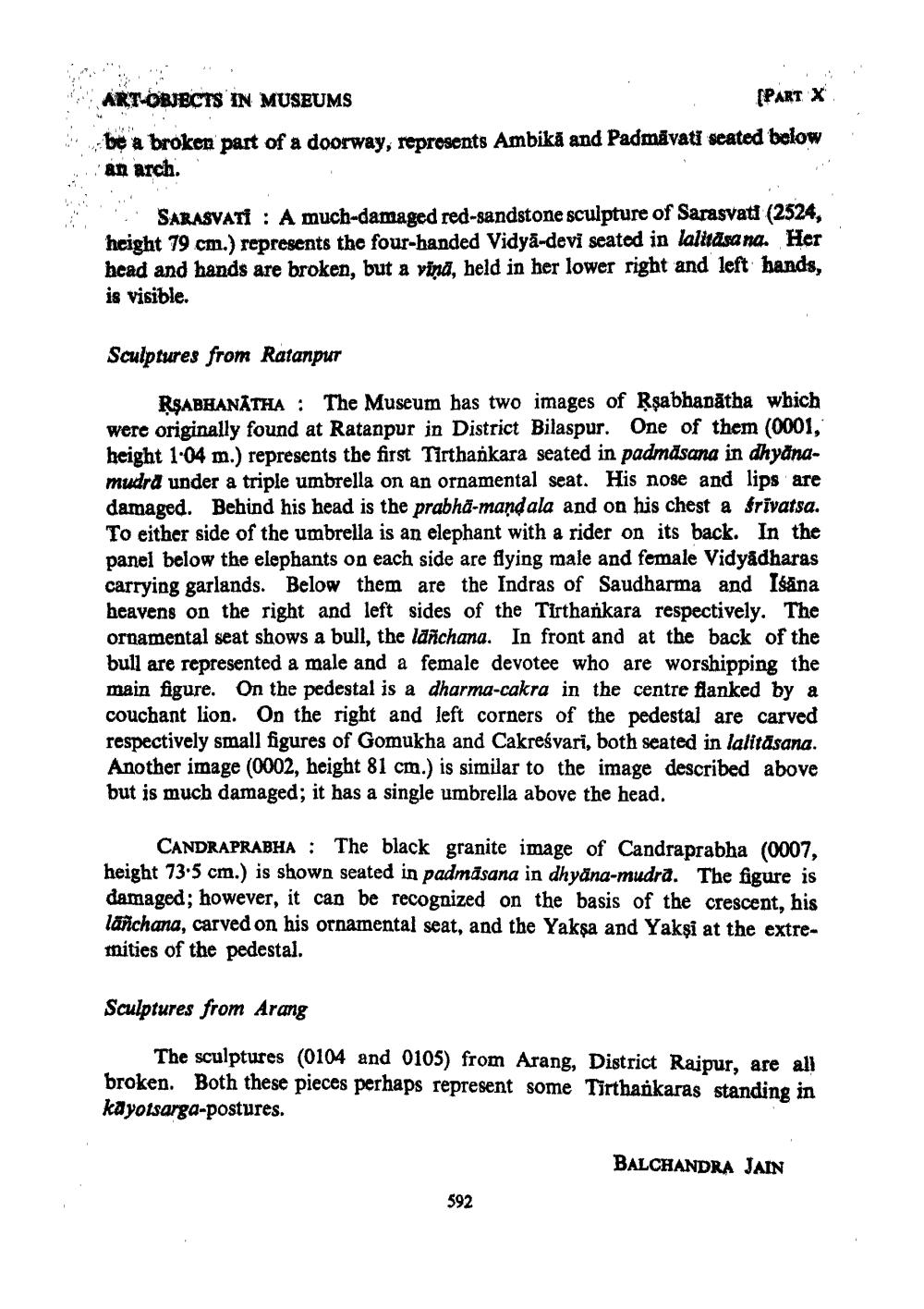________________
ART-OBJBCTS IN MUSEUMS
(PART X be a broken part of a doorway, represents Ambika and Padmavati seated below ..an arch.
SARASVAT . A much-damaged red-sandstone sculpture of Sarasvati (2524, height 79 cm.) represents the four-handed Vidyā-devi seated in lalitasana. Her head and hands are broken, but a vina, held in her lower right and left hands, is visible.
Sculptures from Ratanpur
RŞABHANATHA : The Museum has two images of Rşabhapătha which were originally found at Ratanpur in District Bilaspur. One of them (0001, height 1.04 m.) represents the first Tirthankara seated in padmasana in dhyanamudra under a triple umbrella on an ornamental seat. His nose and lips are damaged. Behind his head is the prabha-mand ala and on his chest a frivatsa. To either side of the umbrella is an elephant with a rider on its back. In the panel below the elephants on each side are flying male and female Vidyadharas carrying garlands. Below them are the Indras of Saudharma and Isana heavens on the right and left sides of the Tirthankara respectively. The ornamental seat shows a bull, the lanchana. In front and at the back of the bull are represented a male and a female devotee who are worshipping the main figure. On the pedestal is a dharma-cakra in the centre flanked by a couchant lion. On the right and left corners of the pedestal are carved respectively small figures of Gomukha and Cakreśvari, both seated in lalitāsana. Another image (0002, height 81 cm.) is similar to the image described above but is much damaged; it has a single umbrella above the head.
CANDRAPRABHA : The black granite image of Candraprabha (0007, height 73.5 cm.) is shown seated in padmasana in dhyana-mudra. The figure is damaged; however, it can be recognized on the basis of the crescent, his lanchana, carved on his ornamental seat, and the Yaksa and Yakşi at the extremities of the pedestal.
Sculptures from Arang
The sculptures (0104 and 0105) from Arang, District Raipur, are all broken. Both these pieces perhaps represent some Tirthankaras standing in kāyotsarga-postures.
BALCHANDRA JAIN
592




